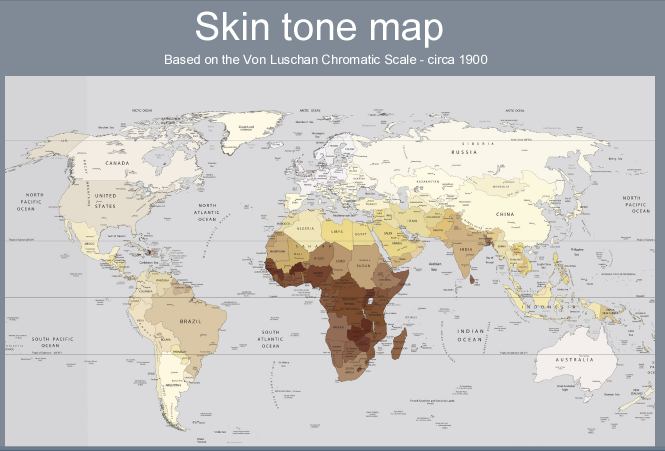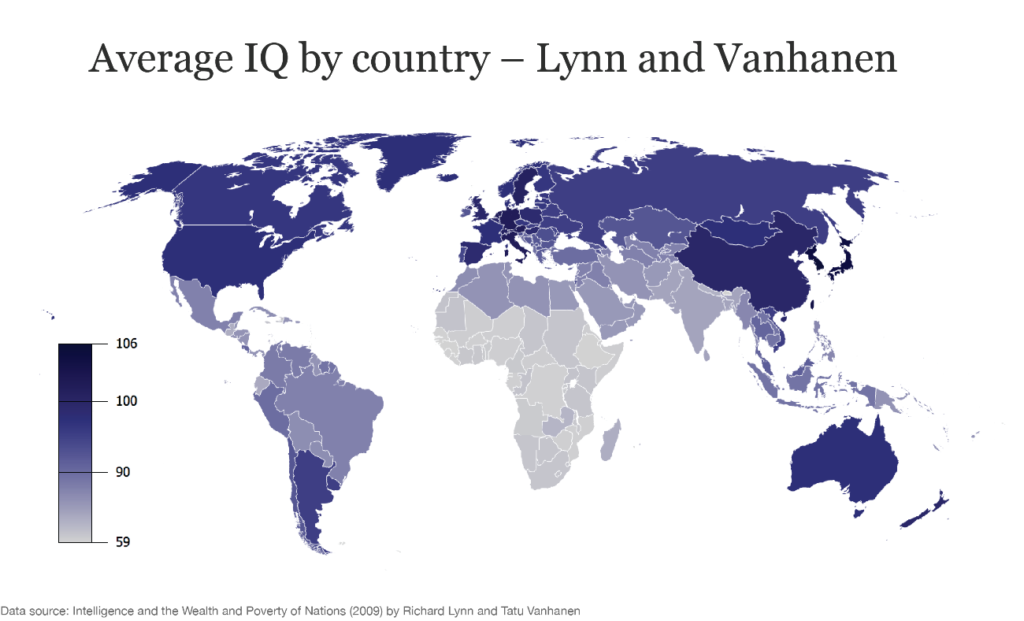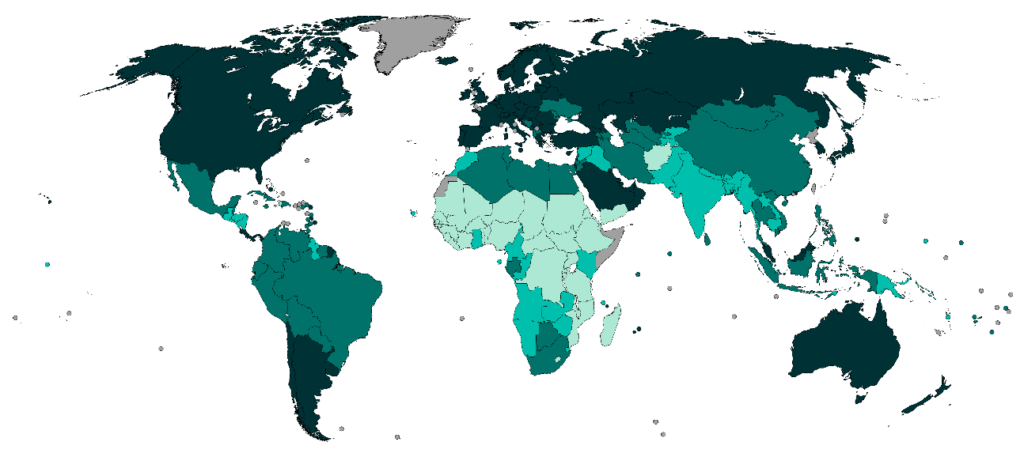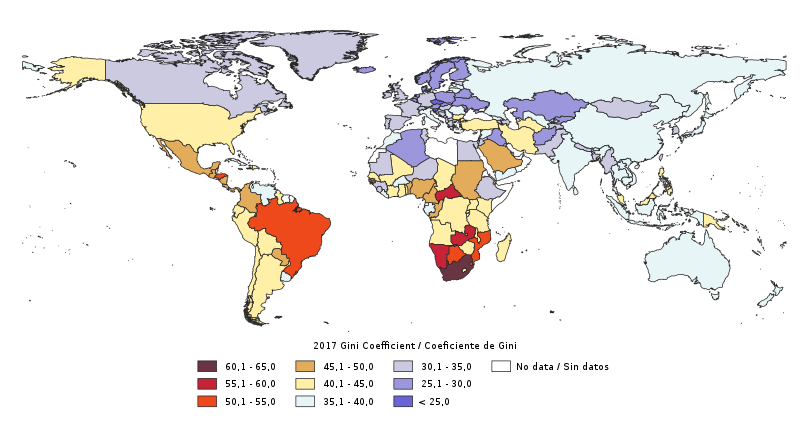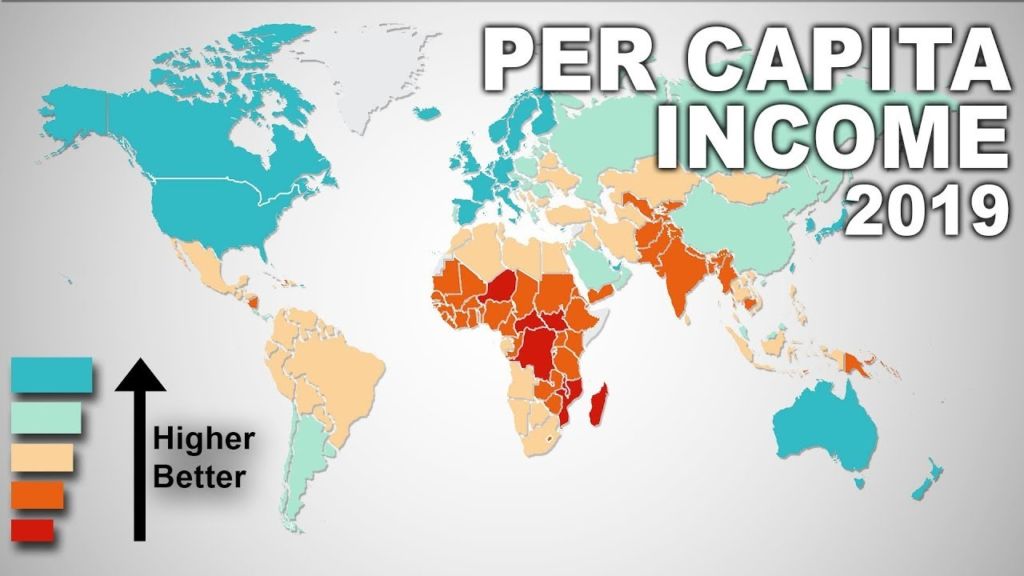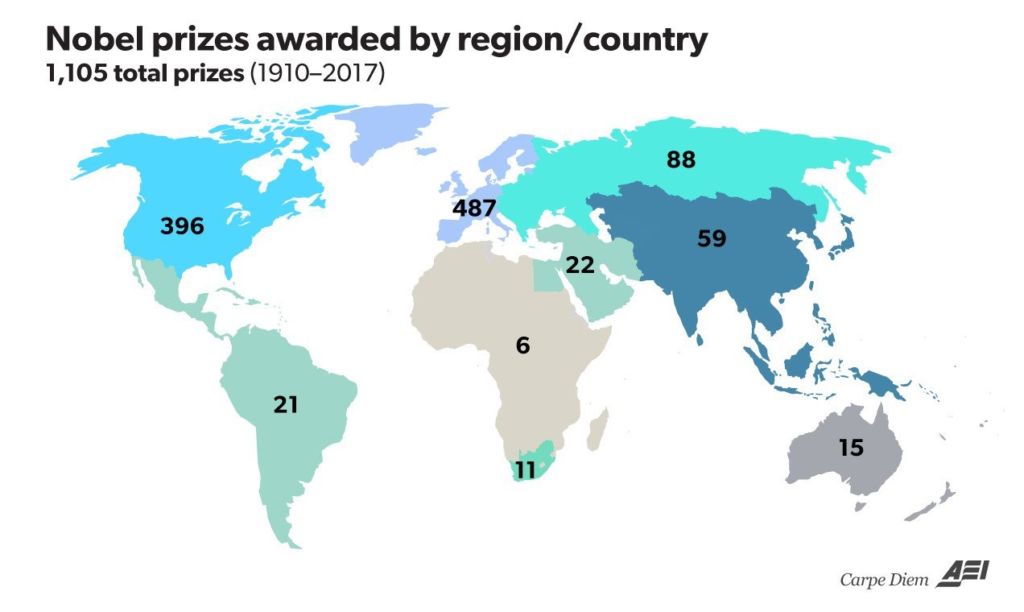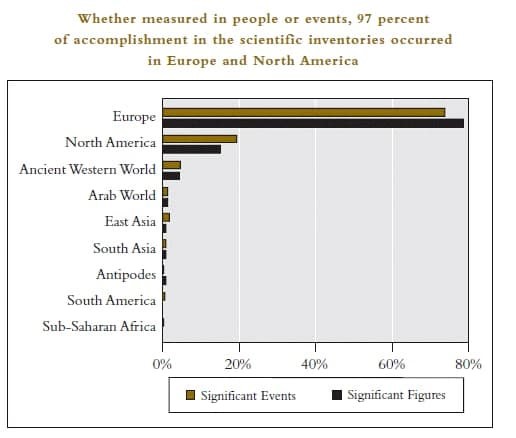The Nation Is a Biological Group, Part 1
Posted By Asier Abadroa On In North American New Right | Comments DisabledPart 1 of 2 (Part 2 here [2])
Spanish version here [3]
After discussing the distinction between identity and culture [4], and explaining why culture [5] is not what creates nations (it is nations that create culture), let us now talk about what a nation is.
For a nation to be one (and not several), it is essential that all parts of its territory are inhabited by people who are compatible in the most important sociological areas. As fundamental as they are, these characteristics of its population can be measured statistically in various ways. As with individuals, among human groups genes are also more determinant than environment or any other non-hereditary factor. And, despite whatever large circumstantial differences there may be, when populations are divided by biological criteria, such measurements are consistent wherever a sufficiently representative sample is taken.
Let’s put ourselves in the viewpoint of an alien space explorer who goes in search of “intelligent life,” and finally discovers our planet. What would he see in humans? How would he classify us?
The first thing our visitor would do, even before establishing the obvious taxonomic divisions, would be to check if there are different stages of civilization across the planet (and if there are psychological differences among the terrestrial populations). The verdict would be positive, even given that there is a free flow of information globally and technical knowledge is fully shared among all the populations, it indicates that not all variants of the species are innately capable of generating culture and cumulative technological progress to the same degree.
He would then begin to develop various indices with which to measure the various aspects of life in each society, relating to its rate of development, cultural sophistication, material well-being, crime, birth rate, technological contribution, quality of life, etc. — in other words, all those things that are determined by the capacity and mentality of the various populations and that are fundamental to the proper functioning of a civilization, which is the raison d’être of all intelligent life. Intelligence, as the direct cause of cumulative scientific, cultural, and technological progress, would be the first thing to be measured.
Many of these indices have already been devised by humans, even though some of them are only timidly maintained in a very few countries, such as the United States’ demographic statistics. Due to the political interests of the System, some indices are forbidden or simply not funded by most countries. Our alien visitor, for his part, would have no qualms about dividing the population in as many ways as he sees fit, nor would he have any reason to hide or sugarcoat the results.
Relevance of the biological factor in the economic performance of states
Even if he simply used the existing figures, as divided by country, he would quickly detect a repeating pattern. Although the world has been divided into somewhat chaotic states since ancient times, they are still relatively homogeneous, and the same blocs of countries tend to always fall roughly into the same places along the scale. This has indeed been the case since long before these “blocs” had any contact with each other.
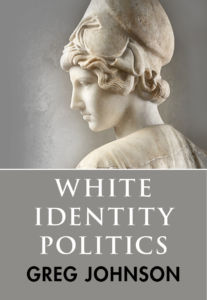 [6]
[6]You can buy Greg Johnson’s White Identity Politics here. [7]
Their development and way of life do not depend primarily on their geographic location, nor on their official language, religion, form of government, density of their population, their currency, their international alliances, or natural resources. On the contrary, their level of development, prosperity, welfare, culture, and civilization fundamentally depend on the qualities of their respective populations.
The factor that overshadows all others, and which is consistently repeated in all cases, is the race that makes up the majority of a state’s population of that State and, therefore, the quality of a country’s population. Thus we see that the countries of white race — the European continent, North America, the southern cone of South America, Australia, etc. — and those of the yellow race — China, Korea, Japan, etc. — are always on one side, while black Africa is at the opposite extreme. At the intermediate point are the Near East and the northern Africa, the Middle East, the dark hybrid Asians of the Southeast, and the mixed-race countries of South America.
It is race, as an evolutionary vehicle, which tends to diverge more and more and also explains these differences between countries. It is race that defines the potential of a nation’s members and their average characteristics — those qualities which, when they diverge too much, are important enough to cause the coexistence of both individuals and groups to become unbearable.
But let us return to our visitor from space. The first thing that would jump out at him is that there is an obvious correlation between the human species’ civilizational development and its skin color; thus, to classify us, he would start by drawing up a map such as the one below, indicating the average skin tone of the inhabitants of each region of the world.
Of course, he would not yet know the reason for this correlation, but he would eventually figure it out. It is not due to a cause-and-effect relationship between skin lightness and intelligence, but rather to the fact that both are independent effects of the same evolutionary cause: natural selection in the frozen north during the last ice age. The biological groups that evolved in that environment became new races that developed, on the one hand, a lighter skin in order to be able to generate more vitamin D from the scarce sunlight they received in a very overcast environment, and on the other hand a greater intelligence in order to be able to survive the long winters during which food was extremely scarce. This was unlike what happened in those regions that are close to the Equator.
The harsh winters demanded that the peoples of the north develop a greater capacity for long-term thinking so that they would know to store food during the cyclical periods of scarcity. They also developed greater intelligence in order to develop scientific knowledge that would allow them to determine the characteristics of these cycles and other survival problems, as well as greater self-control in order to learn how to ration food, and so on.[1] [9] The less intelligent and more anti-social and impulsive members of these groups simply did not survive the winters, and their genes disappeared with them, causing these races to evolve in the opposite direction.
This hard independent evolutionary pressure was what caused racial differences to emerge in our species that encompass a multitude of qualities, with implications in extremely varied fields of social life. One of the most important is intelligence. Each race varies enormously in its average IQ.
In this map we see the intellectual average among the world’s population. Although the map is divided by countries, we can see that the results are fully consistent with the characteristics of the race that inhabits them.
Intelligence is, logically, the most relevant quality for the creation and maintenance of a civilization, and has an impact on numerous aspects of social life such as productivity, the ability to create wealth, quality of life, or human development. Here again we observe the same pattern:
This map measures the Human Development Index, an indicator developed by a Pakistani economist for the United Nations. Needless to say, the darker the color of a country, the more developed it is. As we can see once again, the connection between the development of each region of the world and the race that inhabits it is undeniable.
It is not the only factor, of course. There are other drivers, such as natural resources, but they are entirely secondary. The Arabian Peninsula, which has always been one of the world’s largest oil producers, stands out, and is home to several countries with small populations but that are equally overflowing with “black gold,” such as Qatar and the United Arab Emirates. These populations literally live off this fossil fuel, and maintain a colossal caste of civil servants to support them.[2] [12] Even in the case of Saudi Arabia, with its 35 million inhabitants, 70% of Saudis work directly for the government. Despite swimming in oil, they do not reach the level of gross domestic product (GDP) per capita or quality of life as that of many white countries which do not possess any remarkable natural resources. In the case of countries in other regions, such as Botswana, diamond production alone accounts for 40% of the national economy.
South Africa, for its part, besides being one of the world’s leading producers of gold and diamonds (which is the country’s main source of income), is also home to a sizeable Asian community as well as the largest white community in Africa (almost five million), and is the African country that had white rule later than any others (1994).
That natural resources are a secondary factor is shown by the fact that, far from there being a correlation between a country’s raw materials and its prosperity, the correlation is even negative; that is, globally, countries with more natural resources tend to be poorer than those without them (see graph below). The reason is that non-white countries tend to have more natural resources than white countries. In fact, white countries are net importers of energy and raw materials. Moreover, despite this abundance in poor countries, their underdevelopment often leads to ironic developments such the fact that Venezuela, the country with the largest proven oil reserves in the world, needs to buy gasoline from Spain and Russia because it lacks the technology and specialized personnel required to refine it. Peru and Mexico are also among the world’s main gold producers, but neither they nor Venezuela stand out economically within South America (that is, that part of the continent south of the Rio Grande).
Moreover, the fact that this natural wealth generated by the country’s soil (and not by the people) artificially raises the GDP, and even the per capita GDP of that state, does not mean that this wealth is equally distributed among the entire population. To detect this statistical misrepresentation, we can resort to the Gini Coefficient, an indicator measuring income inequality within each country. Thus we see that, despite the per capita GDP of countries such as Saudi Arabia or South Africa — which are a priori not as badly off as those around them — the truth is that these places, and indeed the whole of southern Africa, Brazil, and the central third of the Americas, are places of very serious economic differences. Poverty reigns almost everywhere in them, but the state’s average is distorted by the fact of there being a wealthy minority that benefits from these. This leads to some minor distortions in the indices.
However, this coefficient is too multidimensional, and there are many factors involved that can push a country in different directions: the type of ruling regime, its natural resources, whether its people value distributive justice and the welfare state, whether it is a multiracial society with genetic populations of differing capacities, and so on. But it provides a useful warning when a country’s wealth turns out to be a statistical mirage with little effect on the population as a whole.
Africa possesses most of the world’s platinum, manganese, chromium, cobalt, and diamonds, as well as a good part of its gold and bauxite, as well as a number of other materials that are important for the manufacturing of electronic devices. There has also been a large increase in the time children spend in school there in recent decades. Despite all of this, blacks do not know how to make any other use of the materials in their possession beyond selling them to races that do know what to do with them.
Keeping the above in mind, let us now look at per capita income, which is in line with the results of the previous maps. As we see here and in the human development index map, the only major state that is not in the top tier among the white countries is Ukraine, a multi-ethnic country that has been at war since 2014. The same has occurred in the Balkan region, where there are significant remnants of the Turkish invader population. Of course, the legacy of Communism has also affected the economic differential between the western and eastern of the European continent — although it is a gap that is now almost closed.
The intelligence of a country’s population has been proven to be the main predictor [16] of a country’s per capita GDP and economic growth, and a population’s intelligence depends on which race it belongs to.
Even so, as we can see in the graph above measuring the very strong correlation between a country’s intelligence and its per capita GDP, the yellow race tends to get less out of its average intelligence than the white race.
In the graph below, we similarly see the number of Nobel laureates that each region of the world has produced. As we can see, almost all of the laureates are concentrated in the heavily white-populated regions of North America and the European continent. The eastern part of the European continent, and especially Russia, is largely unpopulated territory, but despite that it far exceeds (88) the entire southeastern half of the Asian continent (59), which includes countries such as China and India. It should be noted that these two countries alone together possess three times the white population of the entire planet, and only the island nations of Japan and Taiwan have a greater population than Russia’s.
It should also be noted that a large number of the Nobel prizes awarded to countries of other races consist of those who were awarded the Nobel Peace Prize, which is often given to former terrorists who have figured out a way of achieving their goals more easily than with violence. For example, out of the 11 winners in South Africa, only three are blacks — and all of those are “Nobel Peace Laureates.”
Almost all scientific achievements in history have consistently been made by whites, as Charles Murray demonstrates.[3] [20] More than 98% of all scientific achievements and significant scientific figures in human history have likewise come from the white world.
Relevance of the biological factor in terms of values
In addition to economic, scientific, and civilizational development, there are other factors that guarantee the impossibility of coexistence between different human groups, such as each race’s values and idiosyncrasies. This means that these groups could never form part of the same “nation” except from a purely nominal point of view.
Races continue to maintain distinct characteristic behavior even when only samples of individuals of the same IQ are selected and compared [21].
IQ is not the only factor that creates distinct human nations and shapes different societies, however. In addition to differences in problem-solving ability, certain evolutionary circumstances have likewise forged fundamental differences in values, ways of life, and how we relate to other members of our community [22].
It has been argued that the average is not the only relevant factor when it comes to intelligence, and that a race’s internal intellectual variation among its members with respect to the average is also especially relevant. For example, although the average IQ of the yellow race is about six points higher than that of the white race, some authors have argued that yellows seem to be more clustered near their average than whites around theirs, the latter dispersing to a greater extent towards the extremes (idiocy and genius). Additionally, given that those who forge history and technological progress are mainly geniuses with IQs of 140 or more, this means that a race with an average of 100 such as that of whites could surpass one at 106, but which is more intellectually homogeneous, in terms of development and civilizational level. But in any case, what is clear is that whites’ much higher performance is strongly related to their idiosyncrasy and their Faustian spirit [23] — the thirst for knowledge, curiosity, non-conformism, adventurous spirit, and continual quest for greatness and self-realization — that has always characterized our race.
 [24]
[24]You can buy Greg Johnson’s In Defense of Prejudice here [25]
Whites evolved in groups of fewer individuals due to the difficulty of finding food in their glacial environment. Not only was greater planning ability necessary to survive the winters, but also greater social organization and cooperation with other members of the group was essential for hunting, as well as for mutual protection and to care for their offspring. Thus, their social bonds had to be strengthened and their altruism had to be increased, qualities that were imprinted in the racial psyche through the reproduction and preservation of certain genes over other, more anti-social ones.
Today, we can see how the consequences of this selective pressure on certain races separates them from others in easily measurable aspects, such as the inability to postpone gratification, the rate of illegitimate children, obesity, psychopathy or aggressiveness, and so on.
The dark races’ greater propensity for having more illegitimate children, for being more negligent parents, for having more offspring without consideration of whether they can provide for them, and so on is the result of a reproductive strategy that is the opposite of that which evolved on the European continent and in northern Asia during the last glacial period. This is because in the north it took much greater effort to ensure the survival of the children.
In contrast to the more r reproductive strategy of Africans — producing more offspring, albeit with a lower probability that each will reach adulthood — in the harsh environment in which the ancestors of whites and yellows evolved, those who prevailed were those who followed a more K strategy: investing more resources in a smaller number of offspring in order to increase their individual chances of survival.[4] [26] In the graph below, we can see the average number of children across the world. This difference, as always, holds between the different races within each country as well. For example, the only reason France is the only European country with an average of more than two children per couple is due more to its large African population than its indigenous population. And despite what many believe, the reason for this is not due to the religion of these people, but rather in their race. Note how the averages in the Muslim countries of the Balkans, which are mainly white, are far from exceeding two children per couple, unlike the Arab Muslim countries.
* * *
Like all journals of dissident ideas, Counter-Currents depends on the support of readers like you. Help us compete with the censors of the Left and the violent accelerationists of the Right with a donation today. (The easiest way to help is with an e-check donation. All you need is your checkbook.)
For other ways to donate, click here [28].
Notes
[1] [29] Richard Lynn, Race Differences in Intelligence.
[2] [30] For this reason, tiny countries such as Singapore, Bermuda, the Cayman Islands, Luxembourg, or Monaco tend to present greater distortions, and it would be methodologically erroneous to take them into account.
[3] [31] Charles Murray, Human Accomplishment: The Pursuit of Excellence in the Arts and Sciences, 800 B.C. to 1950.
[4] [32] J. Philippe Rushton, Race, Evolution, and Behavior.

